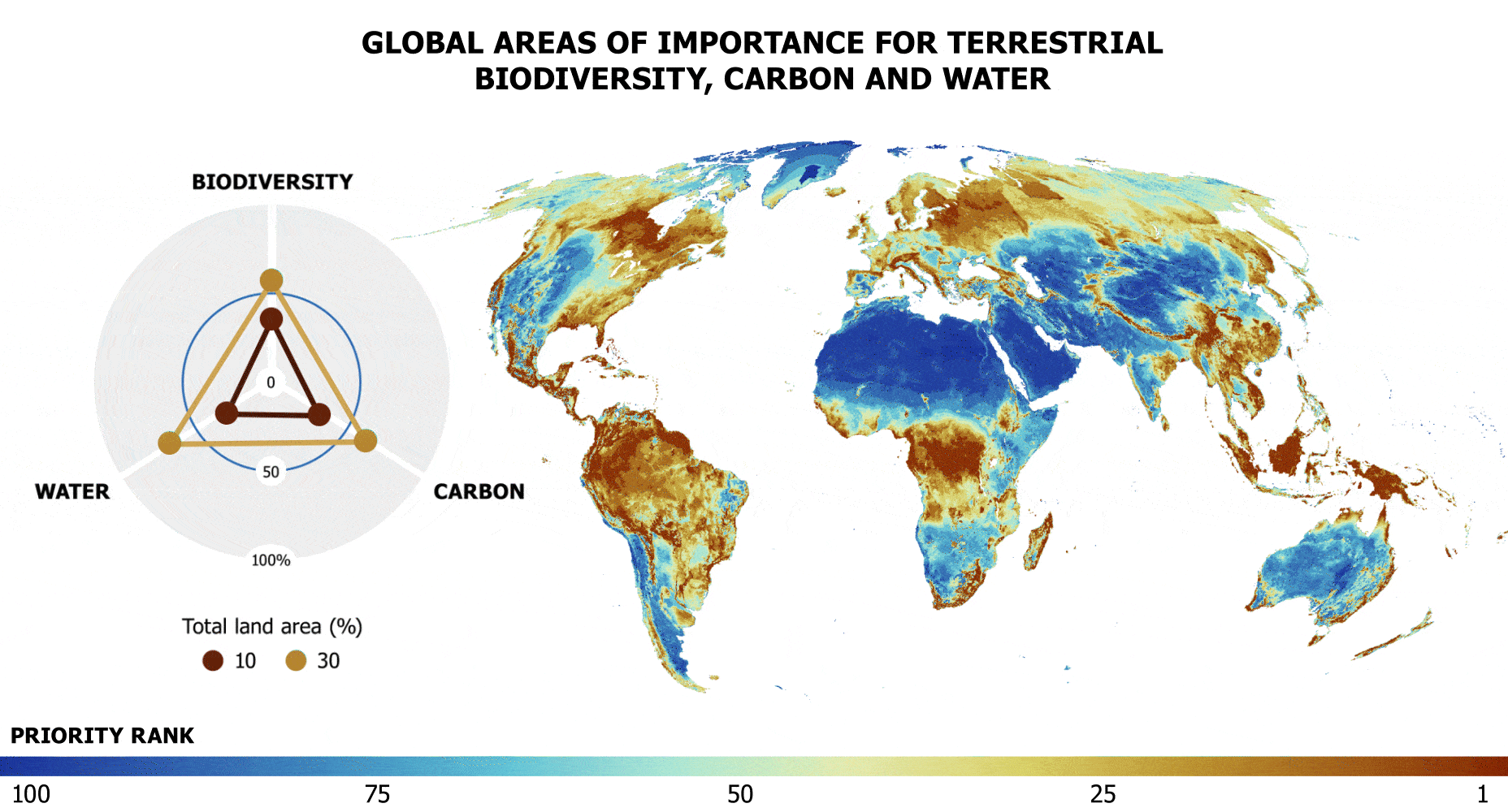To meet the ambitious objectives of the global biodiversity and climate conventions, spatial guidance is needed to identify which land areas have the potential to generate the greatest synergies between conserving biodiversity for its intrinsic value whilst also supporting nature’s contribution to people (NCP). This will help identify the priority areas for conservation and sustainable use as we increase global conservation targets from the current target of 17% of land.
Professor Mark Mulligan
23 August 2021
Clean water and carbon storage will be vital for biodiversity
A new paper, published in Nature, Ecology and Evolution, has found that protection of land important to both carbon sequestration and clean water supply is vital for effective biodiversity conservation.

With existing targets for biodiversity conservation having been missed in 2020, additional deterioration can only be prevented by greater conservation strategies and measures.
The research found that, by protecting the top-ranked 30% of land area for carbon, water and biodiversity, conservation targets for almost 70% of all terrestrial vertebrate plant and animal species considered by researchers could be met whilst concurrently safeguarding almost 62% of the above- and below-ground biomass and vulnerable carbon and 68% of global clean water.
The international team of scientists, led by the International Institute for Applied Systems Analysis (IIASA), provide an optimisation that maximizes areas for effective species conservation, carbon retention, and water quality regulation in order to map terrestrial conservation priorities globally and aid with the implementation of biodiversity and climate conventions.
Biodiversity across the globe is under threat from factors including climate change. However, as well as its intrinsic value, nature provides vital contributions to people, including through ecosystem services such as carbon storage and the provision of clean water.
The research shows that “ensuring the highest ranked areas retain their present conservation value in the next decade would greatly contribute to achieving global species conservation targets, harnessing climate change mitigation potential of natural ecosystems, and maintain their water quality regulation potential”.
Professor Mark Mulligan and Dr Arnout van Soesbergen, from the Department of Geography, mapped nature's contribution to providing global supplies of clean water using metrics from their WaterWorld and Co$tingNature tools. These open access tools use satellite-derived spatial data, coupled with sophisticated spatial models for water quantity and quality, to map the provision of clean water at multiple scales from local to global.

Delivering the UN Sustainable Development Goals
King's College London has a long and proud history of serving the needs and aspirations of society. We are committed to the UN Sustainable Development Goals (SDGs) as a university, and we use them as a framework for reporting on our social impact. The SDGs are a set of 17 goals approved by the 193 member states of the United Nations (UN) which aim to transform the world by 2030. This research supports SDGs 6, 14 and 17.


